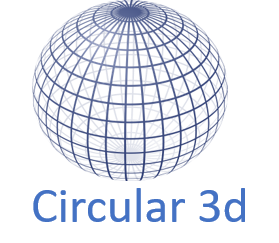We are at the tipping point of a new phase in the web’s evolution, called by early pioneers as Web3. It’s an umbrella term for various ideas all pointing in the direction of wiping out the giant middlemen on the internet. In a Web3 world, navigating the web no longer means logging into platforms like Facebook, Google or Twitter. Instead, people control their own data and switch from email to social media to shopping by using a single personalized account, creating a public record on the blockchain of all that activity.
Web3 represents the next phase of the internet and, perhaps, of organizing society.
For years, Web3 has remained a theoretical grand vision, but in recent months, a future empowered by blockchain has come to dominate tech conferences and social media chatter in certain circles. It’s even forced major tech companies to assemble teams dedicated to Web3.
A brief history of the Web
To better understand the development of Web3, let us look at a brief history of the internet:
Web1 was the era of decentralized, open protocols, in which the web was seen as a way to democratize access to information. However it was pretty disorganized and overwhelming as most online activity involved navigating to individual static websites.
Web2 emerged in the mid 2000s, is the era we are still experiencing right now. It is the age of centralization, meaning a huge share of communication and commerce takes place on closed platforms owned by a couple of very powerful companies like Google, Facebook and Amazon.
While our first two internet generations have connected us like never before, they also have generated problems we’ve never seen before either or as the Internet pioneer Tim Berners-Lee put it:
“For all the good we’ve achieved, the web has evolved into an engine of inequity and division; swayed by powerful forces who use it for their own agendas.”
Web3 is about grabbing some of the power back, breaking the world free of that monopolistic control by building a decentralized online ecosystem based on the blockchain.
If we assume that the WWW has revolutionized information and the Web2 revolutionizes interactions, the Web3 has the potential to revolutionize agreements and value exchange. It changes the data structures in the backend of the Internet, introducing a universal state layer, one by incentivizing network actors with a token. Blockchainhub Berlin
Essentially there are three main significant characteristics of the Web3:
- Open but secure data
- Ownership by Users
- Composability
Let’s dive deeper into each of these aspects:
Firstly, all data is open, but safe. The data is literally living in the blockchain or in the distributed systems, but it’s secured. It’s actually secured far better than huge corporations can secure our data because each is secured with our own private key.
Secondly, the platform is owned by its users. The beauty of Web3 is that apps and platforms won’t be owned by a central gatekeeper, but rather collectively by its users, who will earn an ownership stake by helping to develop and maintain those services. Users are given “tokens” for participating which can be used to vote on decisions, and even accumulate real value.
Finally, there is the concept of composability, which is very powerful as composable means that Web3 builds like digital LEGOs. Due to its open nature, you can just copy the LEGO and then build on top of it. Therefore it can lead to fast iterations and exponentiell tech developments.
“Composability is to software what compounding interest is to finance.” Chris Dixon, American Internet Entrepreneur
Summarizing it could be said that Web3 is addressing global inequality by sharing the reward and the risk. By incentivizing its users and by splitting the reward and the risk of building a giant tech service across millions of volunteer asset holders, Web3 could be also thought of as a variant of universal basic income. In other words, if we would split the approximate $5 trillion total market cap of Alphabet, Meta, Apple, Amazon, and Microsoft across a billion users to give them around $5,000 each, they’d be much more supportive.
Limitations of Web3
Despite this promising potential, Web3 is coming with its own limitations and challenges, like:
- Scalability: transactions are slower on Web3 because they’re decentralized.
- UX: interacting with Web3 applications can require extra steps, software, and education. This can be a hurdle to adoption.
- Accessibility: the lack of integration in modern web browsers makes web3 less accessible to most users.
While these are definitely huge constraints, we are in the extremely early days of Web3, meaning that these limitations will be (and are already) addressed on the way but will certainly take time until they are resolved.
The Internet of the Future
As soon as the hurdles have been overcome, can we expect a future Internet, where Web3 completely replaces Web2 along with huge corporations? That’s not very likely, experts rather imagine a scenario where the technology will operate alongside Web2. But the trend will urge huge centralized platform companies to innovate in favour of their users. Instead of staying on the “walled gardens” of big tech companies, users want to take their own data and history of interactions to other places on the internet.




